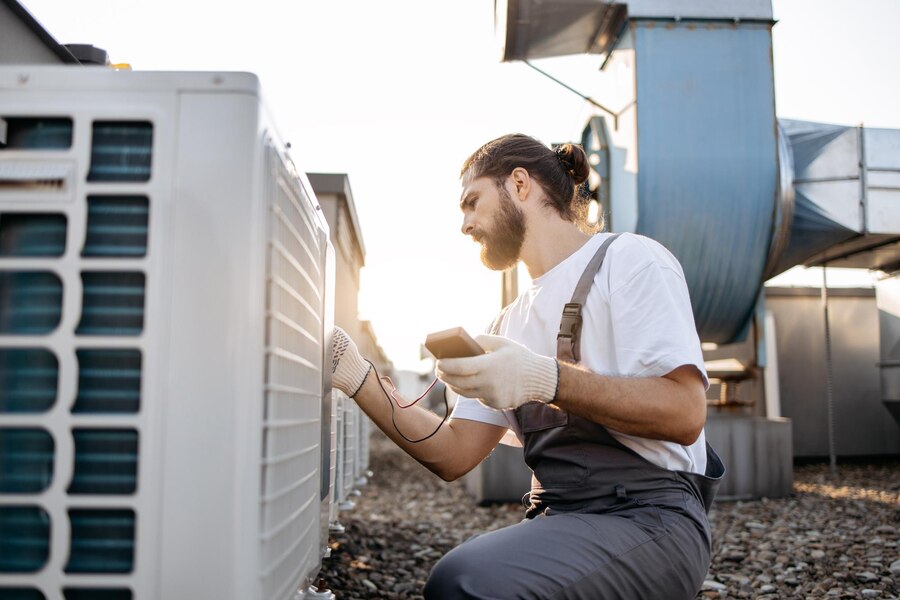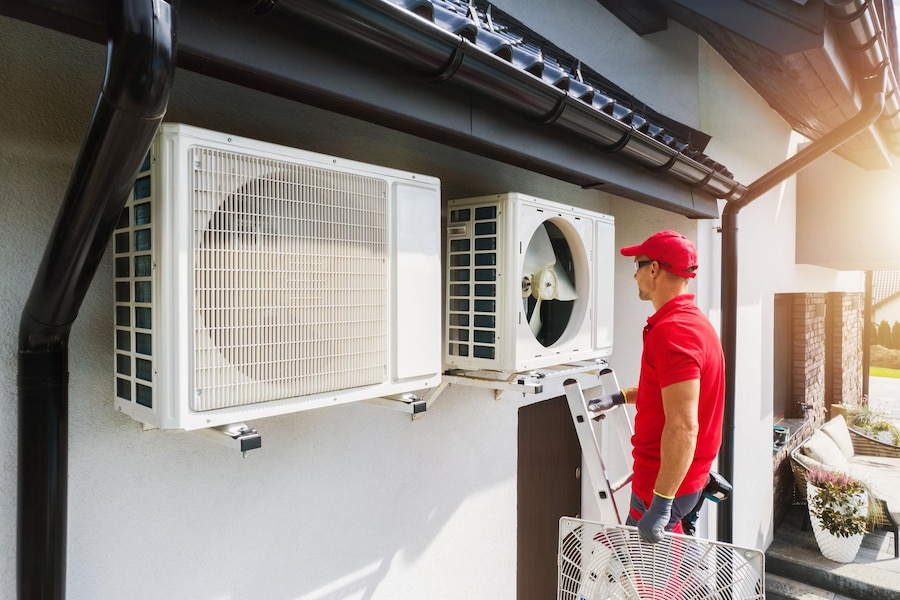
In the intricate world of home heating, one of the most critical yet often neglected aspects is airflow. Furnace systems, the unsung heroes of winter comfort, heavily rely on proper airflow to deliver consistent temperatures and coziness throughout the home. At Tradewind Heating And Air, we delve deep into the mechanics of furnace airflow, exploring its pivotal role in system efficiency and offering expert guidance on optimization strategies to ensure your home stays warm and comfortable even in the coldest months.
Heating and Air Conditioning Services
Unraveling the Role of Airflow in Furnace Efficiency
Airflow serves as the silent conductor orchestrating the symphony of warmth within a furnace system. It is the mechanism through which cold air is drawn in, heated, and then distributed throughout the home. Efficient airflow is essential for maintaining uniform temperatures and optimal comfort levels, ensuring that every room remains inviting and snug.
The Vital Importance of Proper Airflow
Proper airflow is the cornerstone of a well-functioning furnace system, influencing its performance in numerous ways:
- Consistent Comfort: Adequate airflow ensures that heated air is evenly distributed, preventing uncomfortable hot and cold spots within the home and maintaining consistent comfort levels for occupants.
- Energy Efficiency: Optimal airflow allows the furnace to operate at peak efficiency, minimizing energy consumption and reducing utility costs. When airflow is restricted, the furnace must work harder to achieve the desired temperature, leading to increased energy usage and higher bills.
- System Longevity: By reducing strain on furnace components, proper airflow helps extend the lifespan of the system, minimizing the need for repairs and replacements. A well-maintained system with good airflow is more likely to remain reliable and efficient for years to come.
Factors Impacting Furnace Airflow
Several factors can hinder or disrupt airflow within a furnace system, compromising its efficiency and effectiveness:
- Dirty or Clogged Filters: Over time, air filters can become clogged with dust, dirt, and debris, obstructing airflow and reducing system efficiency. Regular filter maintenance is essential to ensure proper airflow and indoor air quality.
- Blocked Vents: Obstructed supply or return vents restrict airflow, preventing heated air from reaching its intended destination. It’s crucial to ensure that all vents are open and unobstructed to promote optimal airflow throughout the home.
- Ductwork Issues: Leaks, cracks, or obstructions within the ductwork can impede airflow, leading to inefficiencies and comfort issues throughout the home. Regular duct inspections and maintenance can help identify and address these issues before they impact system performance.

The Consequences of Poor Airflow
The repercussions of poor airflow extend beyond mere discomfort, encompassing a range of potential issues:
- Reduced Heating Performance: Inadequate airflow limits the furnace’s ability to deliver heat effectively, resulting in uneven heating and longer heating cycles. This can lead to discomfort for occupants and increased wear and tear on the system.
- Increased Energy Consumption: A furnace struggling with poor airflow must work harder to achieve the desired temperature, leading to higher energy bills and increased carbon emissions. Improving airflow can help reduce energy consumption and lower utility costs.
- System Malfunctions: Continuous operation under conditions of poor airflow can place undue stress on furnace components, increasing the likelihood of breakdowns and costly repairs. Regular maintenance and airflow optimization can help prevent these issues and keep the system running smoothly.
Strategies for Optimizing Furnace Airflow
To maximize furnace efficiency and performance, homeowners can implement the following strategies:
- Regular Filter Maintenance: Replace air filters regularly to prevent clogs and ensure unimpeded airflow throughout the system. Check filters monthly and replace them as needed, especially during periods of heavy use.
- Ductwork Inspection and Cleaning: Periodically inspect ductwork for leaks, damage, or obstructions, and schedule professional cleaning as needed to remove accumulated debris. Clean ducts promote better airflow and indoor air quality.
- Ventilation Assessment: Ensure that supply and return vents are free from obstructions and positioned to promote optimal airflow throughout the home. Keep furniture, curtains, and other objects away from vents to allow for proper air circulation.
- Professional Maintenance Checks: Schedule annual maintenance checks with a qualified HVAC technician to identify and address potential airflow issues before they escalate. A professional can assess the entire system and make recommendations for optimizing airflow and improving overall efficiency.
- Consider Air Purification: Installing an air purification system can help maintain cleaner air and prevent buildup of debris in the HVAC system, which can impede airflow.
- Invest in Zoning Systems: Zoning systems allow for more precise control over temperature distribution in different areas of the home, reducing the need for excessive airflow and improving overall efficiency.
The Importance of Furnace Airflow at Tradewind Heating And Air
By prioritizing airflow optimization, homeowners can enhance the efficiency, comfort, and longevity of their furnace systems, ensuring reliable performance throughout the heating season. At Tradewind Heating And Air, we specialize in providing comprehensive HVAC services, including airflow assessment, maintenance, and repair, to help homeowners unlock the full potential of their heating systems. Contact us today to schedule a consultation and take the first step toward a warmer, more comfortable home.

FAQs
- What role does airflow play in furnace efficiency?Airflow is crucial for furnace efficiency as it ensures that heated air is evenly distributed throughout the home, maintaining consistent comfort levels and reducing energy consumption.
- How does proper airflow contribute to consistent comfort in the home?Proper airflow prevents uncomfortable hot and cold spots by ensuring that heated air is distributed evenly throughout the home, creating consistent comfort levels for occupants.
- What factors can hinder airflow in a furnace system?Factors such as dirty or clogged filters, blocked vents, and ductwork issues can hinder airflow in a furnace system, compromising its efficiency and effectiveness.
- What are the consequences of poor airflow in a furnace system?Poor airflow can result in reduced heating performance, increased energy consumption, system malfunctions, and discomfort for occupants.
- How can homeowners optimize airflow in their furnace systems?Homeowners can optimize airflow by regularly maintaining air filters, inspecting and cleaning ductwork, ensuring vents are unobstructed, scheduling professional maintenance checks, and considering air purification or zoning systems.
- Why is regular filter maintenance important for maintaining airflow?Regular filter maintenance is essential to prevent clogs and ensure unimpeded airflow throughout the furnace system, promoting better indoor air quality and reducing strain on the system.
- What are some signs that indicate airflow problems in a furnace system?Signs of airflow problems include uneven heating, longer heating cycles, increased energy bills, and reduced system performance. If homeowners notice these signs, they should consider assessing and optimizing airflow.
- How often should homeowners replace air filters to maintain airflow?Homeowners should replace air filters regularly, ideally every 1-3 months, depending on factors such as filter type, household occupancy, and indoor air quality.
- Can professional HVAC technicians help homeowners optimize airflow in their furnace systems?Yes, professional HVAC technicians can assess the entire furnace system, identify airflow issues, and provide recommendations for optimizing airflow and improving overall efficiency.
-
Why is it important to prioritize airflow optimization for home heating systems?
Prioritizing airflow optimization helps enhance the efficiency, comfort, and longevity of home heating systems, ensuring reliable performance and reducing energy consumption and costs over time.
